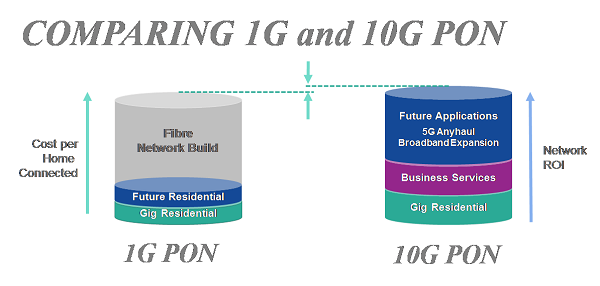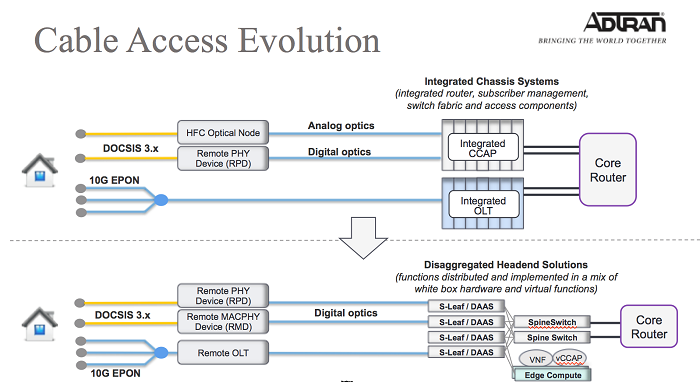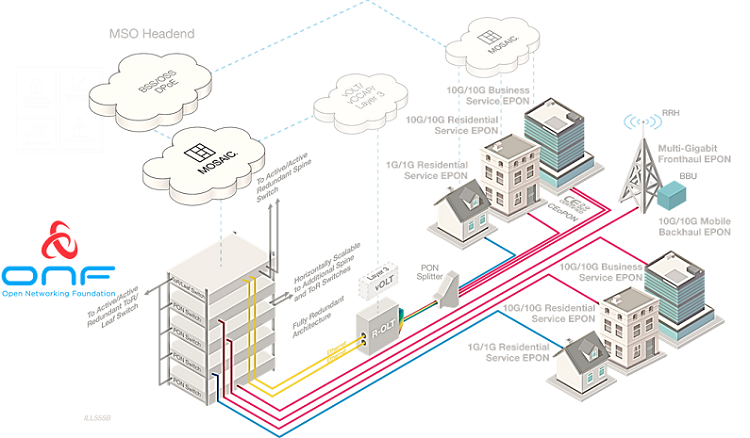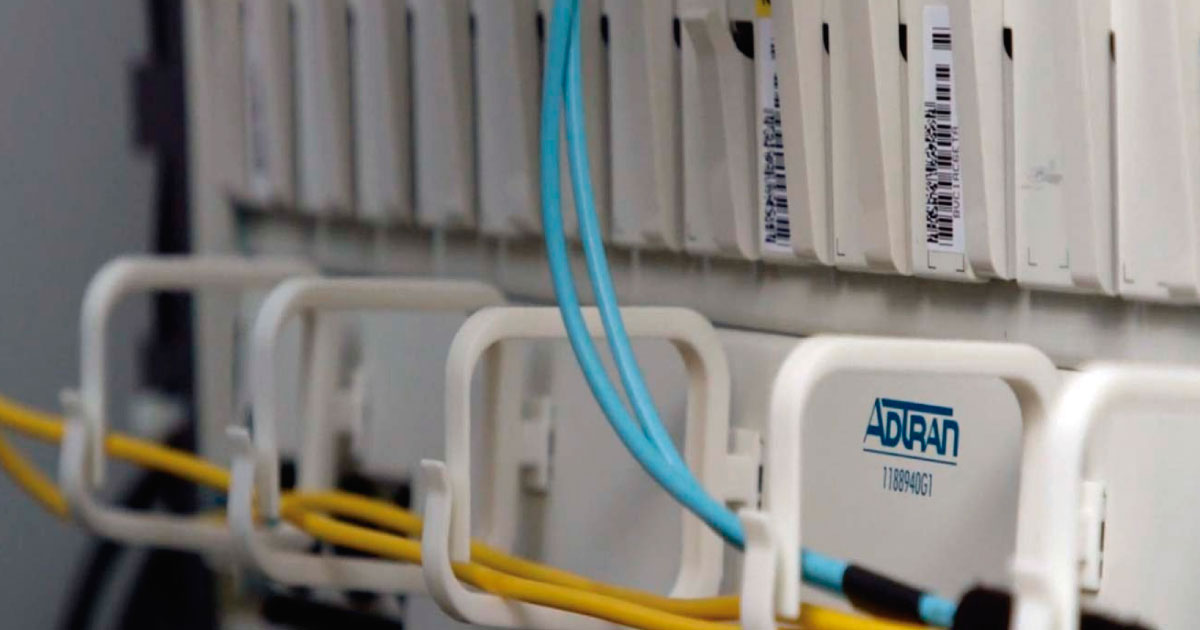Service providers are faced with the stark reality that existing fiber networks built around 15-year-old GPON and EPON (that’s1-Gbps EPON) technology are no longer sufficient to meet a bandwidth demand expected to grow at least 10X in the next decade.
The good news is there are 10-Gbps symmetric variants of PON that are becoming mainstream and more affordable—enabling a strong business case for 10G investments.
Today’s communications networks are under tremendous strain as the hunger for bandwidth grows unabated. By the end of last year alone, shipments of 4K TVs were forecasted to exceed 100 million units, over 60% of which were internet-connected. Online streaming views of live sporting events like Super Bowl 2019 had a record 7 million peak concurrent views (the record was set in July with the more than 9 million concurrent views for the World Cup soccer finals). Netflix continues to dominate video streaming with 15% of global internet traffic. Smart speakers, voice assistants and high-definition video doorbells are leading to an explosion of connected home devices that’s expected to cross 27 billion Internet of Things (IoT) devices by 2021. And looming on the horizon are autonomous vehicles, which are expected to gobble up terabytes of data per vehicle.

A variety of sources combine to spark growth in bandwidth demand.
Service providers are faced with the stark reality that existing fiber networks built around 15-year-old GPON and EPON (that’s 1-Gbps EPON) technology are no longer sufficient to meet a bandwidth demand expected to grow at least 10X in the next decade. The good news is there are 10-Gbps symmetric variants of PON that are becoming mainstream and more affordable—enabling a strong business case for 10G investments.
10G: Good for Business
Next-generation 10G-PON technologies (XGS-PON, 10G-EPON and NG-PON2) offer the scale, flexibility and reliability to realize a future world of converged residential, enterprise and 5G any-haul applications. 10G-PON enables improved operational profitability by converging services from multiple customer segments across a common access network. It affords a fiber broadband provider the flexibility to support the symmetrical gigabit-level bandwidth rates used by businesses and anchor institutions while reliably scaling to support additional customers as household peak usage increases from 5 and 10 Mbps to 50 and 100 Mbps.

10G-PON offers both the capacity for today’s residential and business requirements as well as the ability to support future converged services architectures.
10G PON Price Erosion
So we have established that 10G-PON has improved scale, flexibility and reliability, but what about the economics? Recent 10G-PON optical network terminal/unit (ONT/ONU) and residential gateway (RG) packaging, fiber optics and system-on-chip (SoC) innovations have allowed 10G-PON ONT pricing to approach that of 1G-PON ONT/ONUs. Last year’s 10G-PON pricing has fallen from a 3X price premium over 1G-PON variants to closer to near price parity in 2019. 10G-PON, with its marginal cost delta, affords a material market opportunity to improve network return on investment (ROI) through expanded use cases (premium business broadband and 5G any-haul services), while doubling the life of the network even as residential service peak rates grow.
Cable’s Road to 10G
At CES 2019, the NCTA and leading cable MSO executives announced a vision for delivering 10-gigabit (10G) networks to consumers. Over the past few years, major MSOs have been evolving their cable access network to support this vision of next-generation 10G networks.
DOCSIS 3.1 rollouts have allowed headline service rates up to 2 Gbps in the downstream, which can be upgraded to symmetric 10G with Full Duplex DOCSIS (FDX) in a fiber-deep architecture. As well, MSOs are using 1.2-GHz or 1.7-GHz spectrum to support greater than 10 Gbps per service group over the coax network to deliver a better service experience to users. The cable industry has also begun a transition to distributed access architectures (DAAs), involving deployment of thousands of new nodes (Remote-PHY or Remote-OLTs) closer to customers. This transition will enable MSOs to compete better with fiber-rich telecom carriers, utilities and disruptive web-scale operators.

Cable networks are evolving to provide greater efficiency and competitive bandwidth.
Cable MSOs in North America have also been at the forefront of 10G-PON deployments using 10G-EPON. Such deployments complement the DOCSIS roadmap of multi-gigabit services and supports symmetric 1G/1G or 10G/10G services, making 10G-EPON ideal for premium business broadband. In addition, 10G-EPON fits well with the backhaul requirements of DAA—many of the Remote-PHY and Remote-OLT nodes require 10-Gbps uplinks—enabling MSOs to cost-effectively backhaul and aggregate the growing peak data rates from these remote nodes.
Cable MSOs began 10G-EPON deployments in 2017 and 2018 and are expected to continue rollouts through 2019. 10G-EPON offers greater scale, better economics as well as higher network capacity compared to point-to-point technologies such as wavelength division multiplexing (WDM), making it the technology of choice for business broadband services. As MSOs focus on driving network synergies, 10G-EPON boosts the case to converge residential, business and mobile x-haul onto a common optical distribution network (ODN).
10G-EPON is also key to the evolution to next-generation multi-gigabit PON technologies that can deliver 25G, 50G or even 100G symmetrical services.
Accelerating the Path to Software-Defined Networks
Emerging software-defined access (SD-Access) architectures that separate the control and data planes of broadband networks afford cable MSOs the network economies of data center operation and the service creation and delivery agility of web-scale cloud providers.
SD-Access-based 10G-PON networks leverage open networking and open source software initiatives to support reduced time to market as new services, technologies or vendors are onboarded. SD-Access networks are highly agile, supporting the adoption of network automation and simplified service orchestration and reducing service provisioning times, human error and IT complexity, while enabling customer self-service capabilities. This evolution enables operators to vastly lower the cost to build, operate, innovate and maintain the network.

Software-Defined Access enables greater service flexibility and network automation.
2019: The Year of 10G PON
10G-PON is key to a smart, connected future that includes 4K/8K video, augmented and virtual reality, artificial intelligence, autonomous cars, tactile internet and massive IoT. Delivering on the scale and capacity needed to converge residential, business and backhaul services, 10G-PON can drive efficiency in the network while unlocking capacity to meet bandwidth needs well into the future. With growing deployments worldwide combined with reduced cost of optics (due to economies of scale), 2019 ushers in the Year of 10G-PON.
Hossam Salib is vice president, cable strategy at ADTRAN. He drives ADTRAN’s strategy in support of the cable industry globally with new technologies and products for building the next generation of cable access networks. He is also responsible for driving ADTRAN’s wireless strategy, building a fixed wireless product portfolio to support carriers’ worldwide next-generation fixed wireless broadband access and backhaul network deployments. Prior to joining ADTRAN,Hossam was vice-president, access technology strategy at Comcast.


